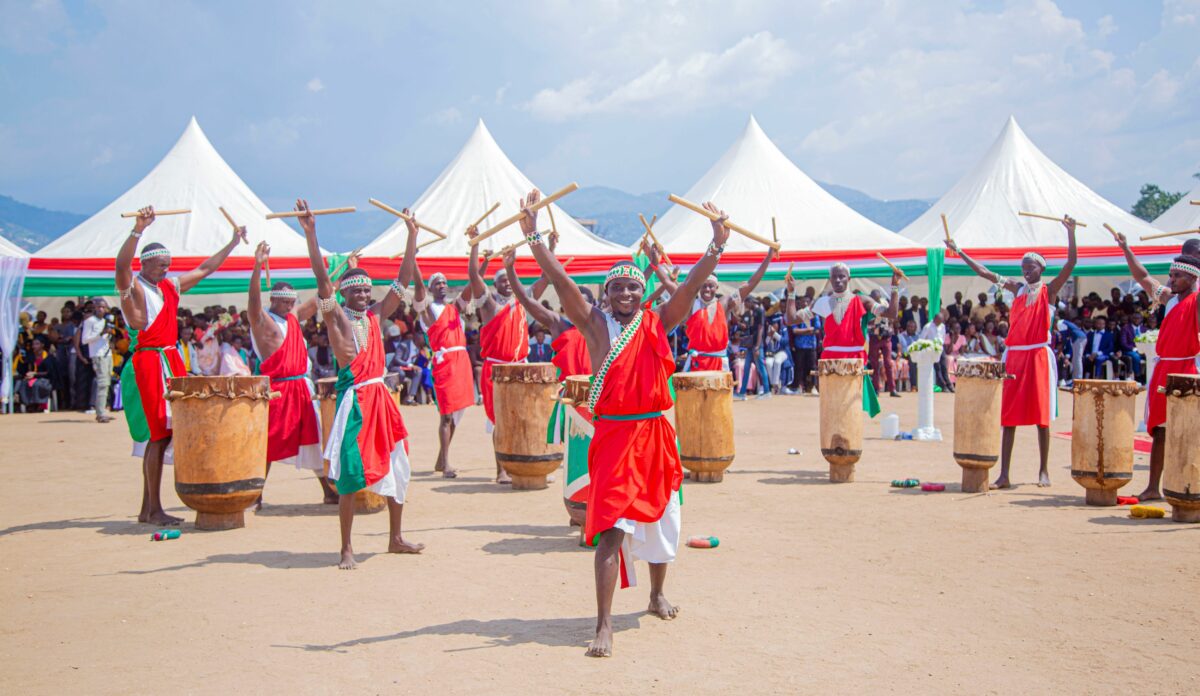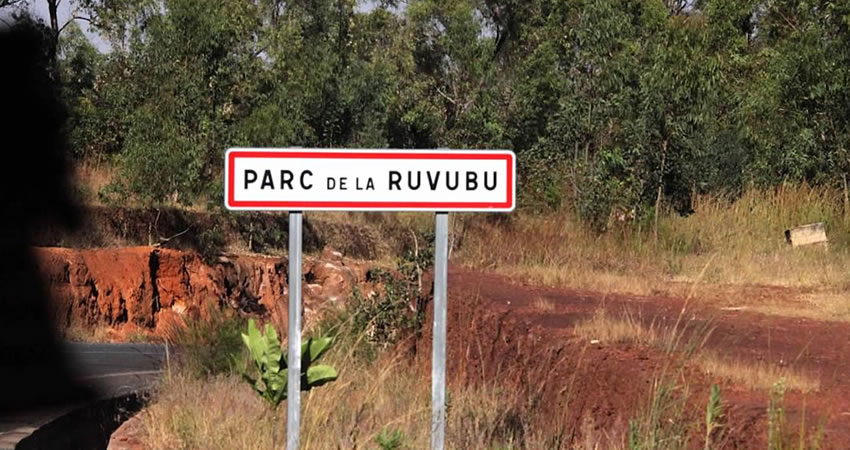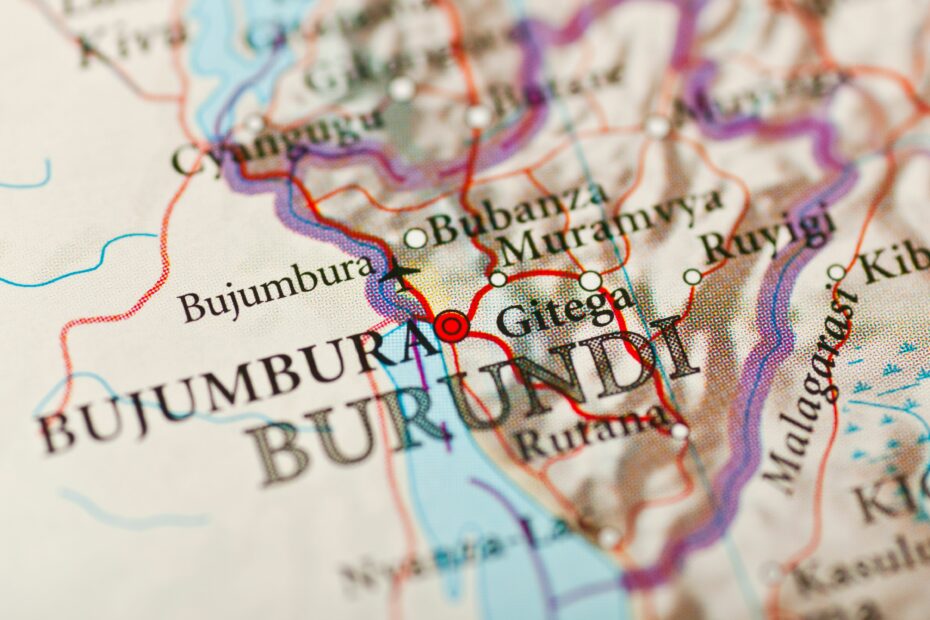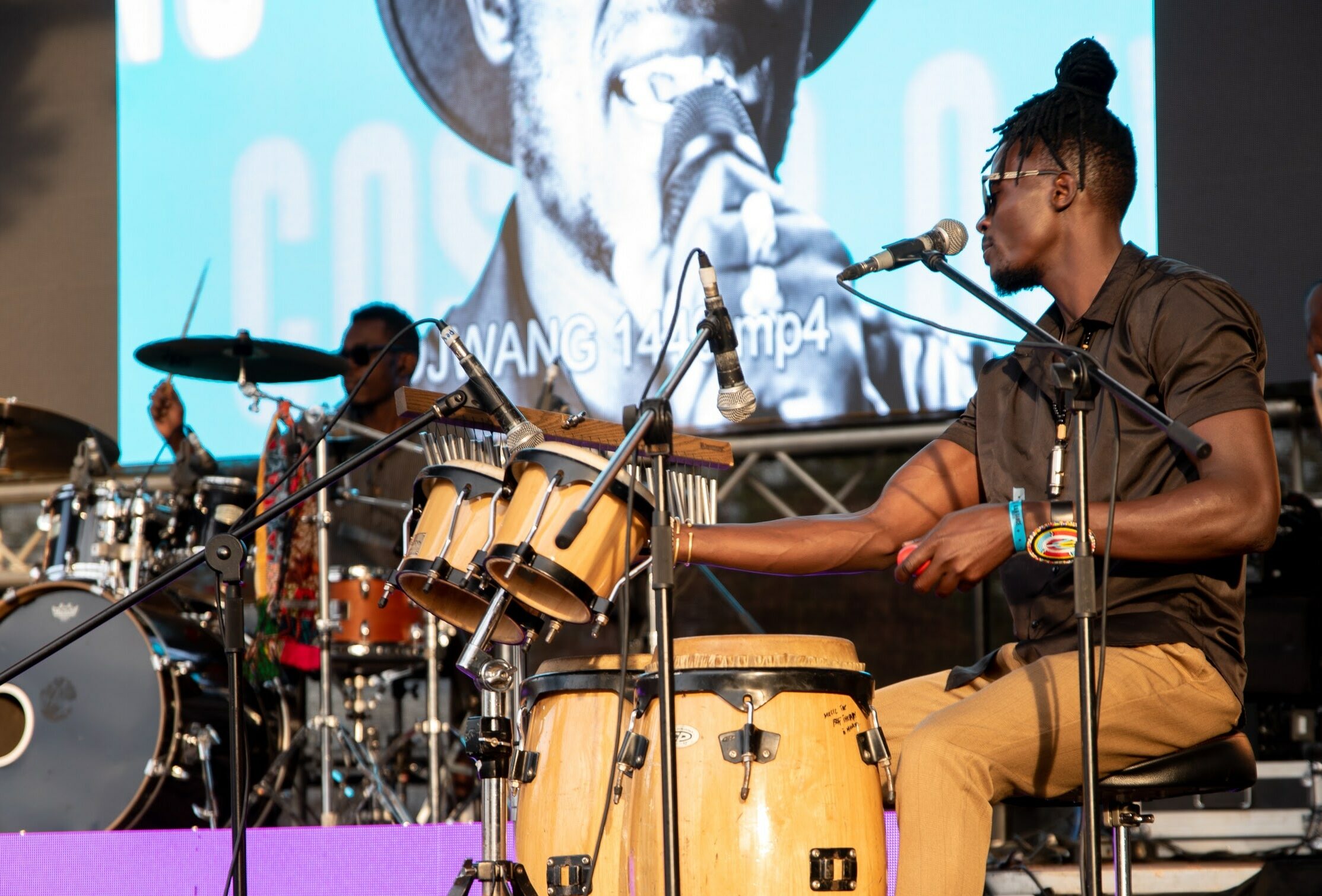Located in East Africa, Burundi shares borders with Rwanda, Tanzania, and the Democratic Republic of the Congo. This small yet captivating country is blessed with unique geographical features, a rich cultural heritage, and a fascinating history. Join us as we explore the diverse aspects that make Burundi a remarkable destination.
Geography: Landscapes of Beauty
Burundi is characterized by its highland plateau geography, which gives it a staggeringly beautiful topography of mountains, savannahs, and lakes. The most significant body of water, Lake Tanganyika, is the second deepest lake in the world and is crucial to Burundi’s biodiversity. The country’s terrain rises from low-lying plains in the east to steep mountains in the west, with the Great Rift Valley creating stunning scenery and fertile lands. Read Also: Major African lakes: Exploring the 7 biggest lakes in Africa
The climate of Burundi can be classified as tropical highland, with significant variation due to the varying altitudes. The low-lying areas, including the regions around Lake Tanganyika, experience warmer, tropical conditions with temperatures averaging around 21°C (70°F). The highland regions are considerably cooler, with averages around 20°C (68°F). Burundi experiences two rainy seasons per year―the long rains from February to May and the short rains from September to November, with the remaining months relatively dry.

History: A Tale of Resilience
Burundi’s history is a tale of resilience and survival. The earliest inhabitants of the region were the Twa people, a pygmy group who were later joined by the Hutu and the Tutsi. These three groups shared the region peacefully for centuries, developing a unified culture and language by the 17th century. Read Also: East Africa’s hidden tourism treasures in the Indian Ocean
In the late 19th century, Burundi became part of German East Africa, marking the beginning of European influence. After World War I, the League of Nations mandated the territory to Belgium, which ruled Burundi and Rwanda as a European colony, Ruanda-Urundi. Belgian rule, which relied on the Tutsi minority’s dominance over the Hutus, contributed to ethnic tensions in the region.
Burundi gained independence from Belgium on July 1, 1962, becoming a monarchy under Mwami Mwambutsa IV. However, the post-independence period was marred by political instability, ethnic violence, and a series of military coups. The most notable of these was the 1972 mass killing of Hutus, recognized as an act of genocide.
Today, Burundi continues to grapple with the legacy of its past but is making strides towards reconciliation, peace, and progress. Despite its challenges, the country’s rich history contributes to its unique cultural identity and resilience.

Culture and Traditions
Burundi’s rich culture and traditions are a tapestry of its people’s historical influences and indigenous heritage. The Twa, Hutu, and Tutsi communities, each with distinct traditions, contribute to the diverse cultural fabric of Burundi. Among these, the ritualistic drumming tradition, known as the “Drum of Gishora,” holds a special place and is recognized by UNESCO as a piece of intangible cultural heritage.
Community life is paramount in Burundian culture, with a strong emphasis on family ties and mutual support. Traditional dances, often accompanied by the Burundian drum, are common during celebrations and festivals. These vibrant performances are a form of entertainment and a medium to pass on historical narratives and societal values.
Food and Cuisine
Burundian cuisine is a tasty reflection of the country’s agricultural heritage. The diet primarily uses staple crops like beans, corn, and cassava. Plantains are another key ingredient in many dishes, boiled, mashed, or fried.

One of the most popular dishes is ‘boko boko harees’, a porridge-like dish made from wheat and meat, typically served during celebrations. In contrast, ‘imboga‘ is a daily dish made from leafy green vegetables. Fish from Lake Tanganyika, especially ‘mukeke‘ and ‘sambaza‘, are also integral to the diet. These are often served grilled, fried, or in a stew.
Local beverages include ‘urwarwa‘ (banana wine) and ‘amahoro’ (a beer brewed from sorghum). Both are traditionally served in a ‘kibamba,’ a communal pot where everyone drinks using long straws, symbolizing unity and shared enjoyment.
Tourism: Unveiling Hidden Treasures
Burundi, a hidden gem in the heart of Africa, boasts a rich array of natural and cultural attractions that draw the interest of discerning travelers. The shimmering waters of Lake Tanganyika, the second oldest freshwater lake in the world, offer a tranquil retreat with opportunities for fishing, swimming, and boat excursions. The lake is home to many exotic wildlife, including hippopotamus, crocodiles, and over 350 species of birds, making it a paradise for nature enthusiasts.

Alongside its natural wonders, Burundi’s cultural heritage is a major draw for tourists. The sacred Gishora Drum Sanctuary, a living testament to the country’s drumming tradition, offers visitors an immersive experience into the heart of Burundian culture. The Ruvubu National Park, featuring diverse flora and fauna, and the Kibira National Park, with its lush rainforests and primates, showcase the country’s commitment to preserving its natural environments.
For city dwellers, Bujumbura, the capital of Burundi, offers a unique blend of urban and beach life. The city’s vibrant markets, colonial architecture, and sandy beaches on the shores of Lake Tanganyika offer a unique travel experience. Despite being one of the smallest countries in Africa, Burundi’s authentic and largely undiscovered attractions make it a fascinating destination for those seeking off-the-beaten-path adventures.
Economy: Sectors Driving Progress
The economy of Burundi is primarily based on agriculture, which employs more than 90% of the population and contributes to around 40% of the GDP. The country’s major crops include coffee, tea, and cotton, its principal exports. However, the agricultural sector faces challenges due to unpredictable weather conditions and limited access to modern farming technology.
In addition to agriculture, the Burundian economy also has a small manufacturing sector focused on processing agricultural products and light consumer goods such as blankets, footwear, and soap. Mining, particularly nickel, also contributes to the country’s export economy.
On the other hand, the service sector, including tourism, is gradually gaining prominence. Growth in this sector is driven by government initiatives aimed at promoting Burundi as a tourist destination and improving infrastructure for the same. The government is also trying to attract foreign investments to diversify the economy and reduce dependency on agriculture. Despite these efforts, economic growth is hindered by political instability, lack of adequate infrastructure, and the country’s landlocked position.
Bottom Line
Burundi, with its captivating landscapes, rich history, and vibrant culture, paints the true essence of Africa. From the tranquillity of its lakeshores to the rhythm of its traditional dances, this country offers a unique journey for those seeking an authentic African experience. As you explore the heart of Africa in Burundi, you’ll discover a land that is as diverse as its people and as resilient as its history.



